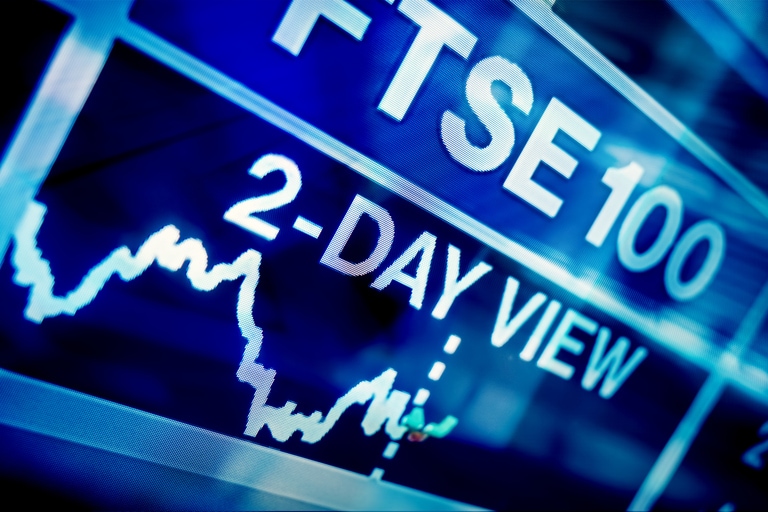European markets finished the day higher for the second day in a row yesterday, although slightly worryingly we closed well off the highs of the day.
US markets also got off to a flier led by the Nasdaq, however the early gains quickly unwound on reports that Apple was cutting production of its iPhone 14 Plus. This followed on the heels of a report at the end of last month that Apple had decided not to boost production of its iPhone 14 in the leadup to the holiday period.
Despite the late retreat from the highs of the day US markets still managed to finish the day in the green.
Consequently, we can expect to see a positive European open with the focus today set to be on inflation levels in the UK and the EU for September.
Today’s inflation numbers are likely to feed into a narrative of bigger rate rises from the ECB next week, and the Bank of England in early November, at a time when bond yields have continued to rise, and the UK market has been beset by political turmoil.
Yesterday the Bank of England pushed back on reports that it was looking at delaying the beginning of its asset sales program due to the recent turmoil in the UK bond market. It went on to outline a plan to sell shorter dated gilts from 1st November, after the details of the new UK fiscal plan are outlined on 31st October.
UK inflation got a bit of a respite in August falling back to 9.9% from 10.1% in July, with the fall in petrol prices helping to pull the headline number back below double figures. While welcome news on a headline level, food prices are still acting as a tailwind rising by 13.1% and up from 12.7% in July, with the price of staples like milk, eggs, and butter all up by over 20%. These increases are expected to filter into September with a move back above 10%
The rise in core prices is also becoming more of a concern despite the stabilisation being seen in energy prices in the last two months or so. On the plus side there is some evidence that PPI inflation is starting to ease.
With all the ructions taking place in bond markets recently due to uncertainty over fiscal policy, the Bank of England could still face a dilemma with core prices now at 6.3%, and set to go higher to 6.4%, which could shift their focus to be more aggressive in the short term.
While the recent changes to the government’s fiscal policy may well have made their life easier in the long term, it doesn’t alter the challenges facing the central bank in the short term.
The UK bank is still way behind the curve and lagging well behind the Federal Reserve, and with the US central bank due to go by 75bps the day before the Bank of England is next due to meet, the pressure to raise rates by at least the same amount is probably the bare minimum that markets can expect to see, with recent rises in wages also likely to feed into any decision.
Having seen EU CPI rise to a record 9.1% in August there was a high expectation that the September numbers would be even worse, with the pressure on businesses to pass price increases on reflected in a shocking German PPI number which saw factory gate prices rise by an absolutely staggering 45.8%.
For several months now there has been a massive mismatch in PPI and CPI numbers when it comes to EU headline inflation. It now appears that the headline CPI numbers are accelerating. The latest flash number saw headline inflation surge by 1.2% month on month, pushing the annualised number up to 10%, and pushing core prices up from 4.3% to 4.8%.
The only reason EU CPI isn’t higher is because countries like France are suppressing the CPI impact on its numbers by price caps, while in Germany headline inflation is at 10.9%, up from 8.8% in August. A confirmation of these numbers this week are likely to see the ECB come under further pressure to go ahead with another 75bps hike when they meet next week.
EUR/USD – still looking as if we might squeeze higher towards the 50-day SMA and trend line resistance from the highs earlier this year. The bias remains for further losses towards 0.9000, while below 1.0000. A break above parity and the 50-day SMA is needed to signal a short squeeze, towards 1.0200.
GBP/USD – slipped back from the 1.1440 area, just below the 50-day SMA. We need to see a move above the 1.1500 area to stabilise. Support comes in at the lows last week at the 1.0920 area. A move below 1.0920 opens up a return to the 1.0800 area.
EUR/GBP – rallied off the 100-day SMA and trend line support from the August lows at 0.8570, with resistance at the 0.8770 area. A break of this key level could well signal further declines towards 0.8490 and the 200-day SMA.
USD/JPY – continues to edge higher with support at the 147.70 area which was the 1998 peaks. Now trading at its highest levels since September 1990, we could well see a test of 150.00 in the coming days, and beyond towards 152.30.
CMC Markets erbjuder sin tjänst som ”execution only”. Detta material (antingen uttryckt eller inte) är endast för allmän information och tar inte hänsyn till dina personliga omständigheter eller mål. Ingenting i detta material är (eller bör anses vara) finansiella, investeringar eller andra råd som beroende bör läggas på. Inget yttrande i materialet utgör en rekommendation från CMC Markets eller författaren om en viss investering, säkerhet, transaktion eller investeringsstrategi. Detta innehåll har inte skapats i enlighet med de regler som finns för oberoende investeringsrådgivning. Även om vi inte uttryckligen hindras från att handla innan vi har tillhandhållit detta innehåll försöker vi inte dra nytta av det innan det sprids.






